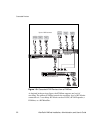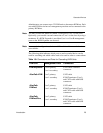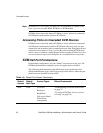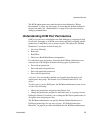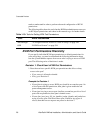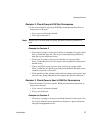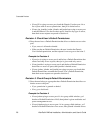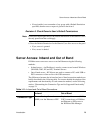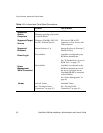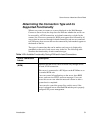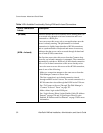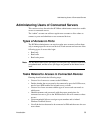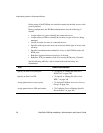
Introduction 27
Cascaded Devices
Decision 2: Check Group’s KVM Port Permissions
2. Is the user included in a group with KVM port permissions that allow or
deny access to the port?
• If yes, access is allowed or denied.
• If no, skip to Decision 3.
Note: When a user is in more than one group, the most restrictive permission is
used.
Example for Decision 2
• If user jim is trying to access port 4 and he is a member of a group called
linux_ca2 that has port 4 in a list of ports with read/write permissions,
then jim is given read/write access.
• If user joan is trying to access port 4 and she is in a group called
linux_ca3 that has port 4 in a list of ports with no permission, then joan is
denied access.
• If jerry and jill are trying to access port 4 and are in a group called
linux_ca4 that has no specific port permissions defined, then their access
requests are passed to decision 3.
• If joe, jennifer, jordan, jolanda, and jezebel are trying to access port 4 and
are not in any group, then their access requests are passed to decision 3.
Decision 3: Check Generic User’s KVM Port Permissions
3. Does the Generic User have specific KVM port permissions that allow or
deny access the port?
• If yes, access is allowed or denied.
• If no, go to decision 4.
Example for Decision 3
• If user jerry is trying to access port 4 and the Generic User has port 4 in a
list of ports with full access permissions, then jerry is given read writer
and power management access.






